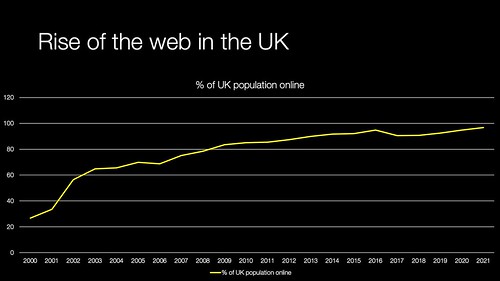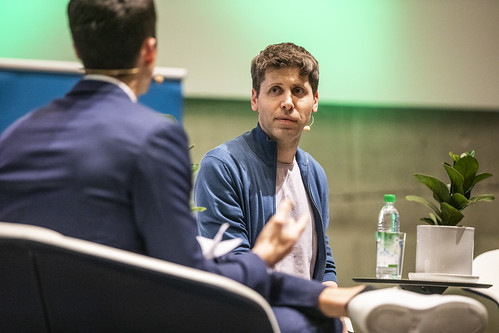Western fast fashion
Western fast fashion brands have managed to spread around the world, despite concerns over working conditions, product quality and impact on the environment. But things have gone into reverse for western fashion brands in China. Just over a decade ago saw China as a potential growth market. But over the past five years things have gone badly for them.
Looking at western fast fashion brand H&M’s presence in China, there has been a consistent decline since a 2017 peak of 507 stores in China.
The reasons cited by Chinese consumers online include:
- Western fast fashion brands aren’t cut / styled for ‘Asian body types’. This sounds like a need for extended sizing
- Local trends: the clothing doesn’t fit with local trends in design in the same way that local rivals can. Brands to keep an eye out for include Urban Revivo and JNBY
- Other foreign brands meet the needs of young Chinese consumers better. These include Brandy Melville, and its “Malibu beach babe” look, while Chuu, is a Korean brand with K-pop aesthetics
More related content here.
Beauty
Luxury skincare for dogs is a thing. Here’s what to know about dog shampoo and paw care.
China
Consumer behaviour
Wavemaker unveils first-of-its-kind global research into Gen X on social – Wavemaker Global – subtext they will be more prosperous due to their parents dying. I still think understanding life stages is more important than understanding ‘generations’
Economics
How China’s “debt traps” actually work – by Noah Smith – interesting assessment on how the Belt and Road projects actually fared. The Chinese government was let down by poor planning and execution by its contractors
Energy
New technology uses wind power to reduce cargo ships’ emissions, fuel use : NPR – interesting article. Back when my Dad worked in shipbuilding 40 years ago there were proposals and trials for similar designs. Economics are now making this technology a reality
Finance
Gadgets
Ming-Chi Kuo: The iPhone 15 Pro Overheating issues aren’t related to TSMC’S 3nm node – Patently Apple – compromises in design and performance trade-offs
Apple releases fix for issue causing the iPhone 15 to run ‘warmer than expected’
Health
Opinion | America’s Next Public Health Moonshot Should Tackle Health Spans – The New York Times
How Japan dealt with its amphetamine problem.
UK prime minister wants to raise the legal age to buy cigarettes in England so eventually no one can – the New Zealand model
Hong Kong
Nope | Big Lychee, Various Sectors – vintage curation by Hemlock
Japan
Japan’s toddler superstar: the baby bringing hope to a ghost village | Financial Times
Luxury
China’s ‘Chanel’? Chinese Beauty Brand Florasis Is Raising Eyebrows on Weibo | What’s on Weibo – this might find ridiculous, but a mix of Chinese guo chao and targeting the global south’s wealthy could see it happen. Whether or not the products are actually comparable is a whole other question
Inside Hatton Garden’s turbo-charged watch market – The Face
Prada is designing Nasa spacesuits. Will luxury customers wear them next? | Vogue Business – if nothing else it puts Prada’s innovation credentials out there which are a key part of the brand’s apparel story
Marketing
Gooding: Feminist brands need to be conscious and proactive – The Media Leader
The power of awe – The Media Leader
How VMLY&R Created a Jennifer Lopez AI for Virgin Voyages | LBBOnline – AI Jenni from the blockchain (sorry I couldn’t resist)
AI Coming to White Castle Drive-Thrus With Help From SoundHound, Samsung
Coca-Cola credits ‘world class marketing’ as it ups growth forecast – credits work on lowering entry points through price-pack architecture and digitised B2B platforms after raising organic revenue forecast for 2023
Media
Dentsu warns brands over tech ‘battling’ to increase ad revenue – The Media Leader – Global media buyer Dentsu’s forward-looking report said there had been an “explosion of the ad-supported segment” and that next year will see “an intensification of competition between ad platforms” with more lookalike apps, data partnership possibilities, premium subscriptions and a further proliferation of advertising formats and offerings. “Brands will have to balance these opportunities with risks to alienate audiences”, the report said. Especially given the fact digital adspend is forecast to hit $450.6bn in 2024, but its year-on-year growth is slowing to 6.2%. This means tech platforms are “battling” to increase their advertising revenue by launching new formats and carrying more placements. Some examples the report highlighted included: developments in adoption of search advertising on social media platforms like Instagram and TikTok, the rise of retail media on commerce sites, ticketing platforms and delivery apps, forecasted “spectacular growth” in advertising on connected TV (CTV), advertising video on-demand players launching new formats like YouTube’s unskippable 30-second ads, and major streaming players (and Amazon’s Audible) trialling or launching ad-supported plans
Security
Gulnara Karimova Accused of Running Criminal Organization in New Swiss Indictment – The Diplomat – Swiss federal prosecutors filed an indictment against Gulnara Karimova, the daughter of Uzbekistan’s first president Islam Karimov, and an unnamed former general director of the Uzbek subsidiary of a Russian telecommunications company for alleged involvement in a criminal organization, money laundering, bribe taking, and forgery. The charges extend over a period of time running from 2005 to 2013 and mark the latest expansion and extension of criminal proceedings against Karimova and her associates. Karimova, once envisioned as a possible successor to her father, lived large and fell hard.
S Korean spy agency warns shipbuilders of N Korean hacking attempts — Radio Free Asia
Taiwan
The Big Lie About Taiwan – The Atlantic – TL;DR – Taiwan is not China
Technology
Power drives SK Telecom to AI pyramid strategy | EE News Europe – The AI Infrastructure plan consists of data centre, AI semiconductor, and multiple large language models (LLM) will serve as a technology platform. This will introduce energy-saving technologies including immersion cooling system and hydrogen fuel cells, and expand into the AI hosting business that generates higher margins by bundling these energy-saving solutions with Sapeon’s neural processing unit (NPU) and SK Hynix’s high bandwidth memory (HBM). – I am surprised that we haven’t seen similar ventures from Oracle, IBM and Fujitsu so far
Intel begins EUV lithography of ‘Intel 4’ process in Ireland | EE News Europe
Intel plans to IPO its FPGA business | EE Newechs Europe
Apple reportedly absorbs rising costs for making iPhone 15 in India | DigiTimes
Web of no web
Apple Analyst Ming-Chi Kuo Wonders Why anyone Needs Apple Vision Pro and more – Patently Apple – where’s the compelling app? It might be in the enterprise, like aircraft servicing




